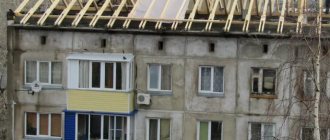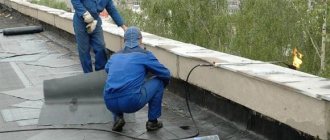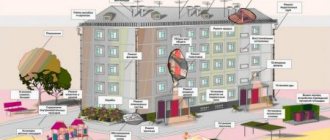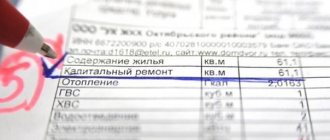What regulations regulate electricity supply in apartment buildings?
The legislation regulating the electricity supply system in MKD is systematically adjusted and is quite extensive. Let's get acquainted with some documentation that is directly related to the issue of power supply.
The electricity retail market is regulated by Federal Law No. 35-FZ dated March 26, 2003 “On Electric Power Industry”. The conditions for the provision of utility services for electricity supply in apartment buildings are adopted by the Rules for the provision of utility services to owners of residential premises and tenants of space in apartment buildings, approved by Decree of the Government of the Russian Federation of May 6, 2011 N 354. In accordance with Regulation No. 1 of these Rules, a permissible stop in the provision of utilities and acceptable inconsistencies in the quality of these utilities with the normative GOST 32144-2013, the conditions and process for adjusting the amount of payment for the provided utilities of poor quality and/or with interruptions that exceed the permissible time established at the legislative level.
For example, the possible duration of an interruption in the power supply of an apartment building belonging to the second reliability category (if there are two independent transformers) is 120 minutes, and for apartment buildings that belong to the third reliability category (there is only one transformer) - one day. For each hour that goes beyond the boundaries of the norm established at the legislative level, the amount of payment for utility services for the estimated time is reduced by 0.15% of the amount established for the given settlement period in accordance with Appendix No. 2, taking into account the paragraphs of the ninth section.
Typically, the power supply to MKD occurs through the main distribution board (MSB) or input distribution device (IDU). In this case, all subscribers are powered from a 220/380 V network with a solidly grounded neutral (TN-CS system). The main switchboard includes a circuit breaker and control devices that allow you to separately disconnect power consumers. The main switchboard distributes power supply voltage to group consumers (lighting of stairwells, basements, attics, elevator equipment, fire and emergency alarms, residential premises, etc.).
Electricity supply to residential premises is carried out through risers, through an RCD. Floor distribution panels are connected to the supply risers, forming a power supply network for the apartments. Floor electrical panels usually include electricity meters, circuit breakers and RCDs. Circuit breakers are grouped for each power supply circuit (lighting, sockets, electric stove, washing machine, etc.). To ensure an even load on the distribution network, the power circuits of different apartments are connected to different phase conductors.
The easiest way is through the Housing and Communal Services Reform website
Important! This method is suitable very conditionally, since the Reform is not particularly filled out now. The information from there may be slightly (or not slightly) out of date. But it is very convenient, so let's start with it. Open the website “Housing and Communal Services Reform” and enter the address of the house into the search:
When searching, do not use the abbreviations “street.” or “d.”, without them the site will easily offer suitable options. This is not GIS Housing and Communal Services.
In the search results, select the house we need:
There are several tabs here, we need a “major renovation of the apartment building”:
Already on the first tab you can see how to create a capital repair fund; for details you can go to the second.
Here you can see the due date of the obligation to pay contributions for major repairs:
Other collection data is likely to be out of date.
On the left there is a small menu where you can see works - completed and future:
Each job can be expanded to see when it will be repaired.
Power supply categories
To better understand the differences in power supply schemes for a multi-storey building (both residential and any other), you need to know that power supply can be provided in different ways, differing significantly in reliability. The most difficult reliability category is the first. With it, residential buildings are powered by two cables. Each of them is connected to a separate transformer.
If one transformer or cable fails, the ATS (automatic transfer switch) device will immediately transfer all power to the working cable. Thanks to this, problems with the power supply will occur in a matter of seconds. After a group of electricians left and repaired the failed equipment, electricity supply is maintained as usual.
In order to correctly understand the various power supply schemes for residential buildings , you need to know about the three categories of ensuring the reliability of power supply to electrical installations. The simplest category is the third. It provides power to a residential building from a transformer substation via a single electrical cable. Moreover, in the event of an emergency, the interruption in the power supply to the house should be less than 1 day.
With the second category of power supply reliability, a residential building is powered by two cables connected to different transformers. In this case, if one cable or transformer fails, the power supply to the house while the fault is being eliminated is carried out through one cable. An interruption in power supply is allowed for the time necessary for the electrical personnel on duty to connect the loads of the entire house to the operating cable.
There are two types of power supply at home from two different transformers. Either the loads of the house are evenly distributed across both transformers, and in emergency mode they are connected to one, or in operating mode one cable is used, and the second is a backup. But in any case, the cables are connected to different transformers. If two cables are laid in the electrical panel of a house , one of which is a backup, but it is possible to connect these cables to only one substation transformer, then we have only the third category of reliability.
With the first category of power supply reliability, a residential building is powered by two cables, just as with the second category. But if a cable or transformer fails, the loads of the entire house are connected to the working cable using an automatic transfer switch (ATS).
There is a special group of electrical receivers (fire alarms, smoke removal systems in case of fire, evacuation lighting and some others), which must always be powered according to the first reliability category. For this purpose, backup power sources are used - batteries and small local power plants.
According to existing standards for the third category of reliability, electricity is supplied to houses with gas stoves with a height of no more than 5 floors, houses with electric stoves with the number of apartments in the house less than 9 and houses of gardening associations.
Electricity supply in the second reliability category applies to houses with gas stoves with a height of more than 5 floors and houses with electric stoves with more than 8 apartments.
According to the first reliability category, it is mandatory to supply electricity to heating points of apartment buildings, and in some buildings, elevators. It should be noted that the first category mainly supplies electricity to some public buildings: these are buildings with more than 2000 employees, operating rooms and maternity wards of hospitals, etc.
The figure shows the power supply diagram for four entrance houses, powered according to the second reliability category with a backup cable. The supply cables are switched using a reversing switch having positions “1”, “0” and “2”. In position "0" both cables are disconnected. The circuit breakers QF1...QF4 feed the lines that run along the access vertical risers, from which power is supplied to the apartments. General house loads: lighting of staircases, basements, lamps above the entrance doors to the entrances are powered by a separate group containing its own electricity meter.
Depending on the number of apartments in the house, all electrical equipment can be placed in one electrical cabinet or in several.
There's no air coming from the attic
Residents of Kamensk-Uralsky were the first to learn about the opportunity to repair apartment buildings “better and cheaper.” It was there that the Deputy Minister of Energy and Housing and Communal Services of the region Alexey Rubtsov first spoke about the innovation. It is secured not only legislatively, but also financially.
— The amount of compensation will be up to 80 percent of the total costs, but not more than five million rubles per house. The money will be available for partial reimbursement of interest on loans and partial payment for energy-efficient major repairs. The latter includes the installation of elevators, the use of energy-saving materials when repairing engineering infrastructure and structural elements of buildings - roofs, facades and other structures, the deputy minister said.
Even simple plastering of the walls of brick houses can increase the temperature in apartments by 2-3 degrees
The region's Ministry of Energy, together with municipalities and management companies, has already begun searching for suitable houses - they will be included in the application for support for 2020-2021.
— The advantages are obvious to everyone. After such renovation of residential buildings, management organizations will have to spend less on routine repairs. And the owners of the premises will receive not only comfortable living conditions, but also up to 30 percent savings on utility bills,” notes Rubtsov.
Really, why not try it? Moreover, the word “energy efficiency” is well known to the residents of the Urals. A colleague said that she personally saw the difference in two houses. In the place where she lives, during the overhaul they simply plastered and painted the walls - and the heat blows out as before. And the neighboring building (it belongs to the HOA) was first thoroughly insulated - covered with thermal insulation material.
Experts confirm: even simple plastering of the walls of brick houses can increase the temperature in apartments by 2-3 degrees. In Kamensk-Uralsky, for example, this operation was included in the list of energy-efficient measures for 2020 (plus the insulation of the attic floor and the repair of the power supply system with the replacement of lamps with LED ones). However, at the same time, no applications have yet been received from Kamenets residents for participation in a special program for energy-efficient overhauls.
“Perhaps this is due to the fact that major repairs are a very expensive item, and sufficient funds have not yet been accumulated in special accounts,” says Yuri Degtyarev, deputy head of the industry body of the Kamensk-Uralsky administration for housing. — Overhauls really require a lot of money. For example, just replacing the heat supply systems in a standard five-story panel building costs about four million rubles, and we are only talking about common property. And installing a common house meter with a weather sensor will cost half a million.
The problem is that there are still not many houses with special accounts. In Kamensk-Uralsky there are just over 30. In Yekaterinburg there are also not many of them - no more than 10-15 percent of the total. In addition, in addition to having a special account, program participants must meet several more conditions.
— Major repairs must be completed no earlier than February 1, 2021. Activities must be included in the approved list of works. Finally, they must result in resource savings of at least 10 percent. Technologies and materials can be anything, the main thing is that the target level of reducing energy consumption is achieved,” says Vasily Fadeev, director of the regional Institute for the Development of Housing and Communal Services and Energy Saving named after Danilov.
Technologies and materials can be anything, the main thing is that the target level of reducing energy consumption is achieved - at least 10 percent
According to him, it is more correct to talk not about energy-efficient major repairs, but about specific types of work that increase the energy efficiency of buildings. Their list is very extensive: it includes the repair of all in-house engineering systems, roofs, basements, facades, foundations, repairs and replacement of elevators. In the Sverdlovsk region, the list was supplemented by the reconstruction of an unventilated roof, the replacement of heat meters and other measures. In fact, almost all types of conventional MKD overhaul can be classified as energy efficient, because they reduce energy costs.
— For example, a well-carried out renovation of a basement with the installation of thermal insulation can reduce the heat loss of a building by up to 30 percent, renovation of a façade with the installation of thermal insulation on external walls and sealing of connections can reduce another 25. The same savings can be achieved by modernizing heating and hot water supply systems with the installation of metering and control units, as well as thermal insulation. Even replacing elevator equipment, which is not the most obvious energy-saving measure, can reduce heat loss by up to 10 percent, lists Vasily Fadeev.
The managers of management companies and homeowners associations are clearly interested in the topic, but so far not everyone is aware of this promising innovation. For example, Oleg Soldatov, technical director of REMP-Elmash Management Company, learned about the innovation from a RG correspondent.
“The very idea of compensating funds for energy-efficient repairs is quite attractive, we will definitely discuss it with the elders in the houses,” he promised.
Help "RG"
The amount of financial support for energy-efficient overhauls is determined for each apartment building individually and can range from a twofold annual reduction in utility costs to a fourfold reduction (if savings exceed 30 percent). The calculation takes into account energy and heat savings (heating and hot water supply).
Ring diagram of power supply for an apartment building
Ring power supply diagram for an apartment building is a plan for installing and connecting electrical receivers, according to which power supply to an apartment building is possible via two cable lines forming a ring. This ring diagram looks like this:
The first and last electrical receivers are connected from the main power source, and so-called jumpers are created between all remaining electrical receivers.
To create such a ring plan, two changeover switches should be provided in the ASU for each apartment building.
In normal mode, the power is evenly divided between the two inputs.
In order to understand why this circuit requires exactly two switches, we let you consider a number of possible emergency situations:
- Failure of one of the supply cable lines
In such a situation, the power supply to all multi-apartment residential buildings comes from one cable line.
Specialists from the management company install the switches in the required position.
- Jumper failure
Workers are required to isolate from the power supply circuit the area where the accident occurred (for example, a short circuit occurred on the line). One part of the houses is powered by one cable line, and the second part of the residential buildings is powered by another. Instead of two changeover switches, you can use three regular ones.
Is it possible to refuse major home renovations?
This event is characterized by similar types of work:
- Checking and strengthening the strength of the main structures of the house.
- Restoration of the foundation and its strengthening.
- Identification of individual sections of walls for repairs.
- Replacement of partitions using the latest fireproof materials.
- Complete replacement of water supply and heating systems.
- Other repair work that will be required in relation to a particular building where major repairs are being carried out.
The authorized organization carries out its professional activities on the basis of an agreement concluded with residents. Previously, each apartment owner signs an official consent to carry out all required procedures. Until this consent has been signed, everyone has the legal right to refuse major repairs of an apartment building.
It should be remembered that no one can force the owner to refuse major repairs of an apartment building, nor can they force him to give his consent. All sorts of threats and mention of fines, in the event that someone wants to refuse, will constitute a gross violation of current norms and legislative standards.
Electricity supply rules
The general rules for power supply to a residential building are regulated by Decree of the Russian Federation No. 354. The management organization ensures the provision of electricity to the consumer. Consumers must pay it on time.
To provide electricity supply, the following actions are carried out:
- Concluding an agreement with a local energy supply organization.
- Development of technical specifications.
- Drawing up a house electrification scheme with calculation of the power of the devices intended for use. This is necessary to determine the cable cross-section and calculate the optimal power reserve.
- Installation and sealing of the metering device, ASU.
- Cable installation.
- Equipment selection.
- Checking compliance and issuing an act of commissioning into the distribution zone.
- Receipt of the document: “Act of fulfillment of specifications” and an agreement for the provision of electricity.
Self-connection is prohibited. The supplying company provides its employees.
Payment for electricity supply
An agreement on the provision of services is drawn up with the management company with the rights and obligations of each party specified.
Payment for electricity can be made in cash or non-cash in various ways using:
- bank cards;
- translations;
- Internet services.
Payment documents are retained for 3 years. Advance payment is allowed. Payment is due by the 10th of each month. The basis is payment documents based on approved tariffs.
How to write a refusal letter
Refusal from major repairs of an apartment building must be carried out officially, notifying the authorities. To do this, you need to write an application in two copies - one for the administration, the other for the management company.
This act indicates the name of the recipient, as well as the sender - a tenant or a meeting of tenants, and the reason for refusing the work. It is better to back up the reason with facts and references to legislation.
The date and signature must be placed at the end of the application.
You can submit such an application at any time, regardless of whether contributions have already been made. If a person deposited amounts into an account and then discovered grounds for refusal, he can submit a corresponding request to the authorities. Usually, a person can even count on a return of the deposited funds, upon a preliminary request addressed to the manager.
But it is best to refuse such a service immediately after receiving the first payment. This will make the procedure easier and faster; in addition, you will not arouse the suspicion of law enforcement agencies, so you don’t have to worry about accruing penalties and fines.
Any homeowner in an apartment building can put forward a proposal at a general meeting about the unnecessaryness of major repairs to the house. If this proposal is supported by all residents, no work will be carried out. To do this, a collective statement is drawn up to refuse major home repairs . It must be drawn up in a form that can be found on the Internet. Only a correctly written application will be considered by the inspector.










